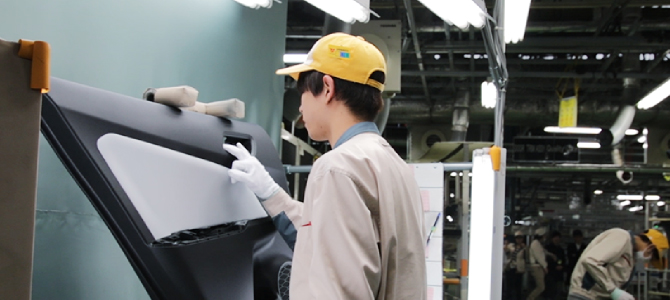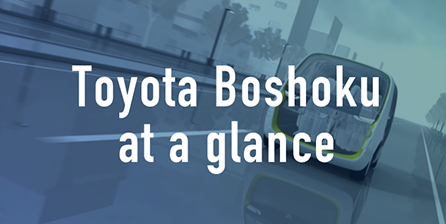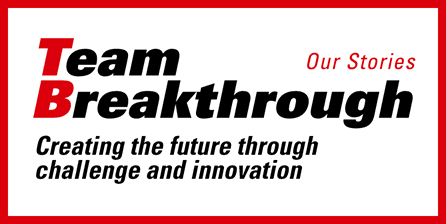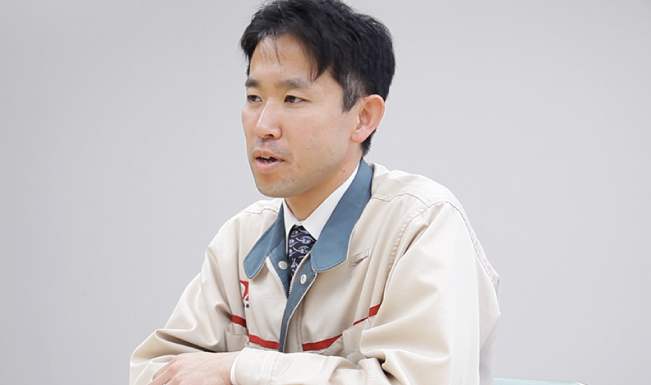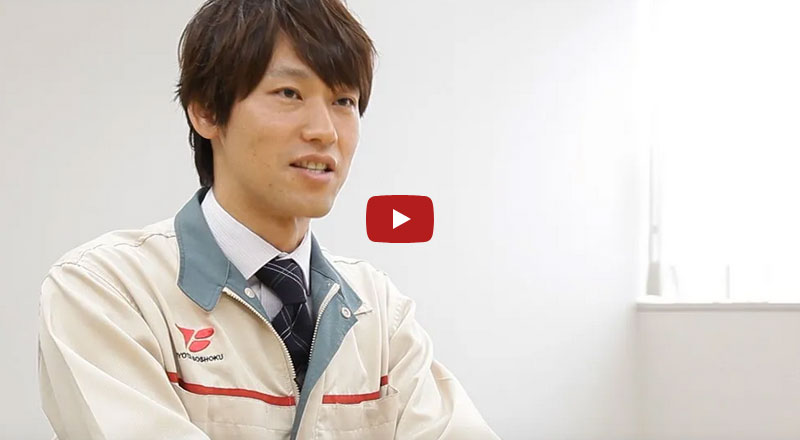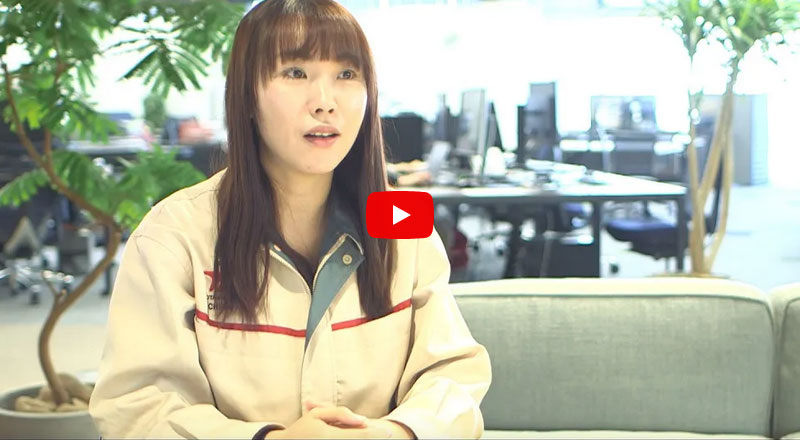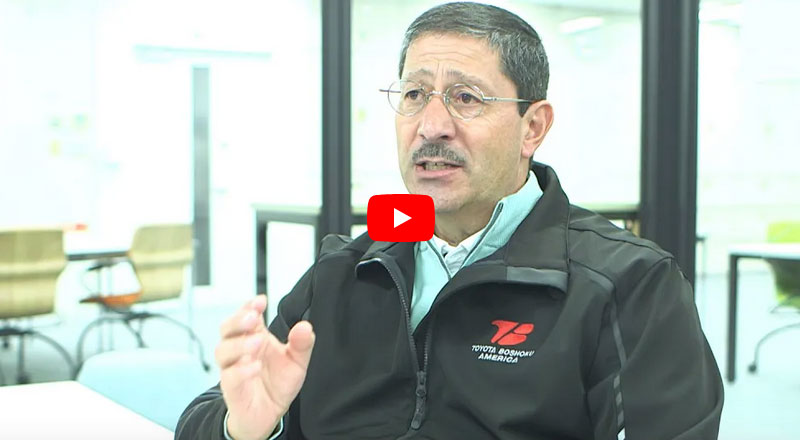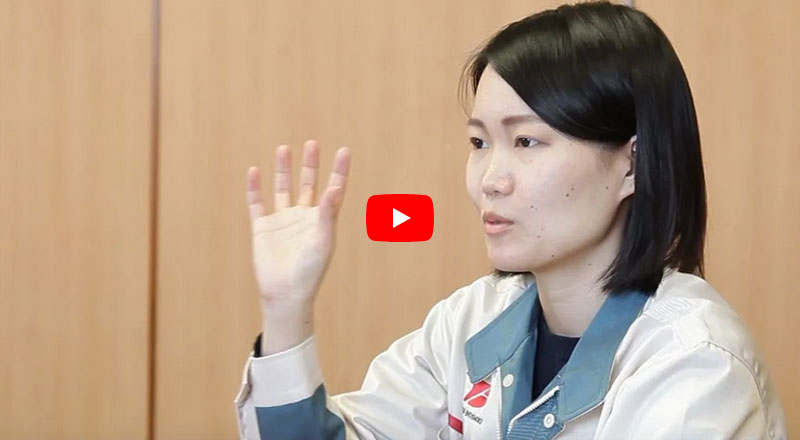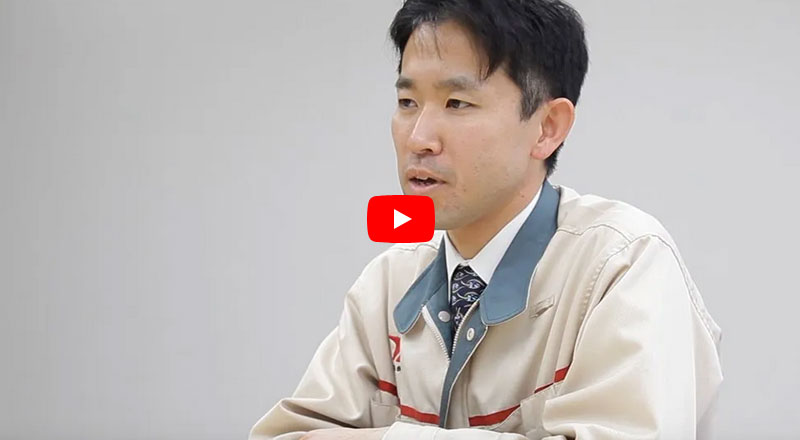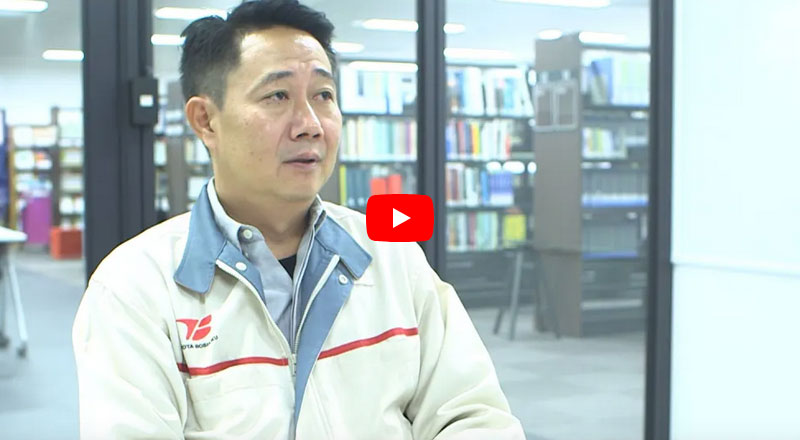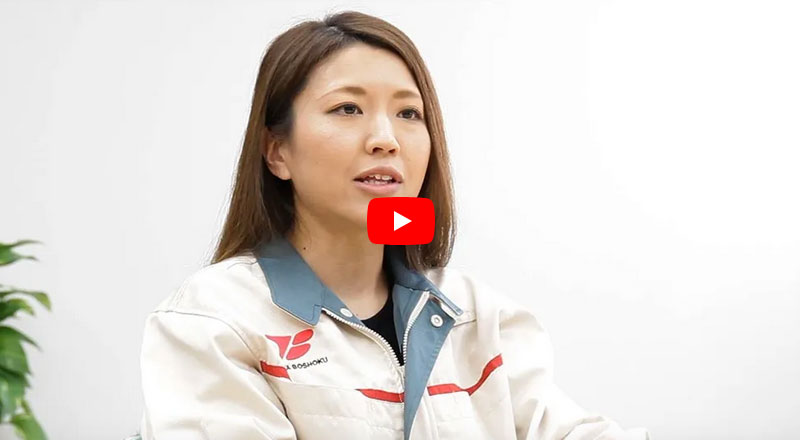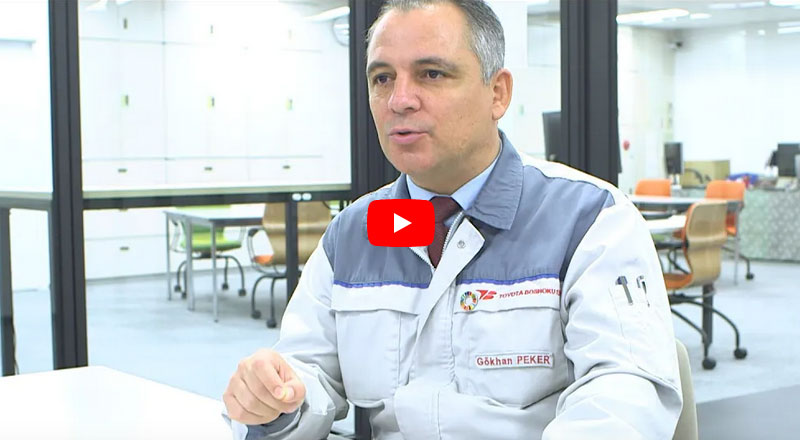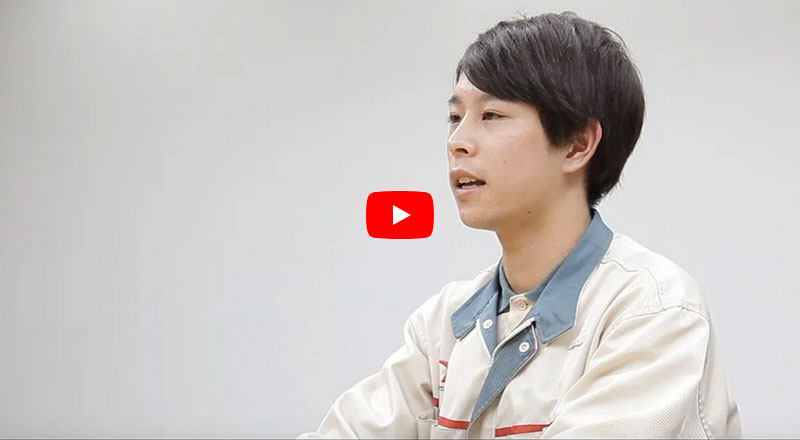



INTERVIEW
INTERVIEW
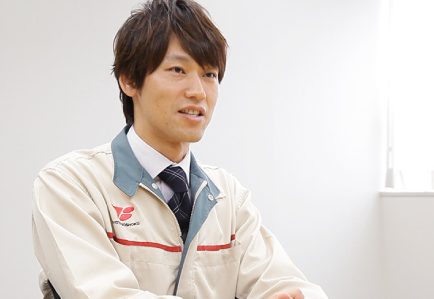


Plans and proposals
Seat Products Planning
Tomokazu Hirano
Confirming what the customer really needs
I am in charge of new seat product planning and proposals for car manufacturers and manage promotion of in-house development projects. What's important to keep in mind is that in order to ensure levels of quality that satisfy the customers who will actually be riding in these cars, I need to get out to where those customers are, meet them and talk to them, and confirm with my own eyes what the end users' needs are. For example, in South America, many people load their cars up with incredible amounts of baggage, so the strength and durability of the seat is more important than anything else. You can't understand the kind of quality people really require unless you go to the actual site. Product planning starts with clearly confirming the customers' needs with your own eyes.
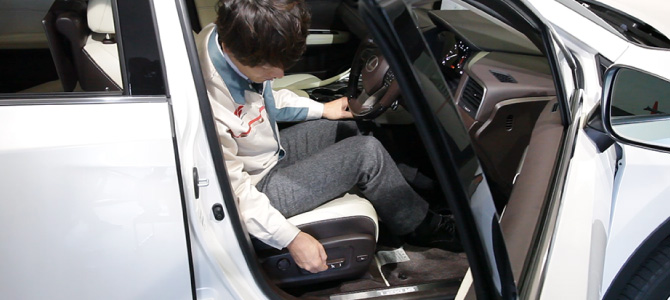
With car seats, functional quality matters
I think about quality in terms of the individual riding in the car— asking, in other words, how comfortable we can make the cabin space we are offering to all our customers. Unlike general interior seating, car seats are judged not just on quality in appearance, but also functional quality. Are we ensuring there is no noise or vibration while the car is moving, and that the occupants don't get fatigued even when sitting for extended periods? Do the seats provide firm support, even with the G-forces produced around curves? Do the seats stay wrinkle-free, even with occupants getting in and out of the car over and over? We work together as a team with the aim of satisfying every type quality sensed by the vehicle’s occupants.
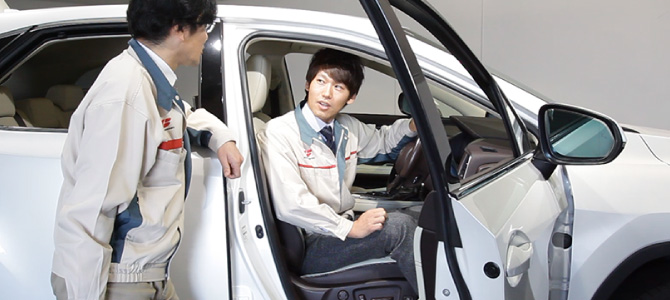
Whole team works for customer-approved quality
In manufacturing attractive, high-quality products, it's important that all of the staff involved put out a 100% effort. My job is to exhibit the leadership needed to coordinate everyone's vectors. Getting everyone to do what they need to do requires teamwork and trust that transcends their respective functions.
I think that teamwork is directly tied to product quality.
Hearing a customer say ”Thank you” or ”This was good” never fails to make me glad I was involved with the project.
I want to take on the challenge of improving quality to pass the customer's test.
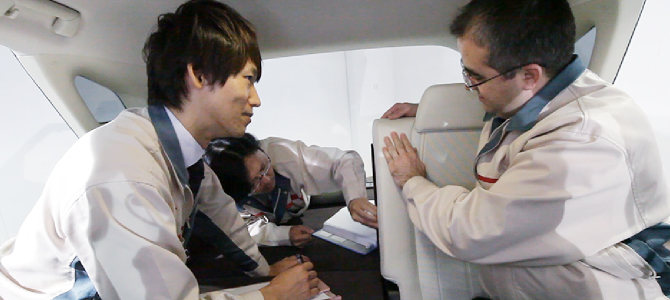
INTERVIEW
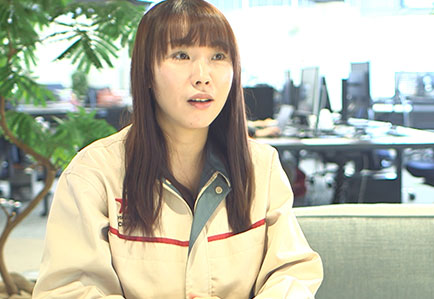


Design
Interior Design
Wang Yun
Design from the customer’s perspective
As a color designer for car interiors, I am in charge of the interior concept, including idea stories and sketches for seats and interior colors.
When creating idea stories and sketches, I strive to give form to the desires of customers. Furthermore, I work to create color concepts based on local Chinese trends, thus bringing satisfaction to our customers.
For example, when planning designs for women, we investigated the preferences of Japanese women and Chinese women. We found that many Japanese women prefer cuteness, while Chinese women desire a more fashionable and mature design. In this way, we determined the varying preferences among women in different regions. Currently, we are designing vehicle interiors while incorporating such regional preferences and ways of thinking. Furthermore, to achieve easily-made products with few defects, we also apply the quality conditions for the subsequent manufacturing process.
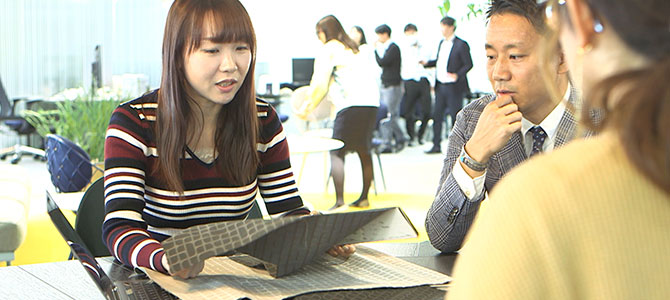
Even better design through Genchi-Genbutsu
When checking the quality of a design which I proposed, I try to use Genchi-Genbutsu and consider the actual conditions when a customer is riding in the vehicle. For example, when confirming the quality of color, the appearance and feeling of the color changes in natural lighting and interior lighting. Therefore, I pay particularly attention to how the color appears when viewed inside of the vehicle cabin.
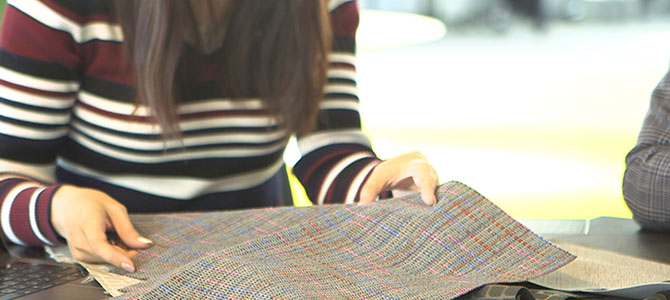
MONOZUKURI based on personal experience
To create a design that really moves the customer, you really need to investigate market trends and customer preferences. I learned through my own experience that the preferred design varies by countries, and even by regions across China. Providing products that satisfy the customer requires creating proposals based on the customer's perspective. I always keep this in mind whenever I'm designing a vehicle's interior.
I want to create products featuring both superior design and performance, products that excite and resonate with our customers not only in the Chinese region, but all over the world as well.
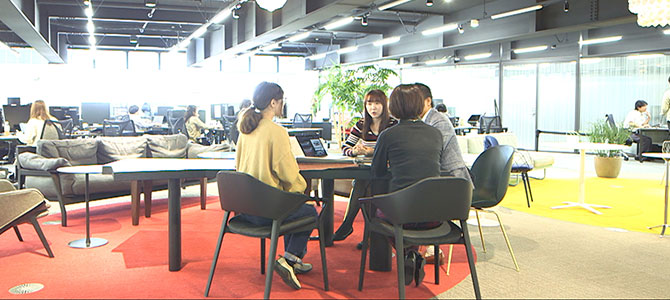
INTERVIEW
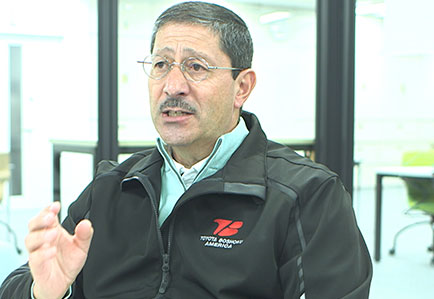


Technical design
R&D and Project Management
John Santilli
MONOZUKURI that creates satisfaction
I have responsibilities for R&D in the Americas Region and oversee program management teams for automotive seat and interior products.
In order to deliver products that satisfy our customers, I strive for MONOZUKURI with design that minimizes deviation in the functionality of our products. Functionality must be stable regardless of how the customer uses the product, the environmental conditions in which the product is used, or manufacturing factors in our plants. Minimizing the deviation in our products will enable us to respond to our customers’ expectations for quality, and will provide customers with peace of mind during use.
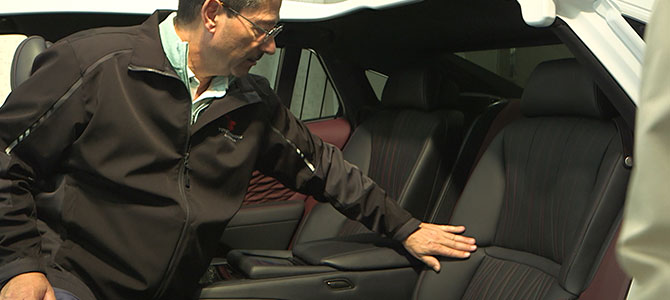
Uncompromising development
From a development perspective, quality consists of incorporating lessons learned from past experiences and functions which bring satisfaction to customers into technical drawings for new products, and then implementing development according to plan. Ultimately, we must provide with products which can be delivered with confidence and which bring happiness to our customers. To achieve these goals, in addition to analysis using CAE, design members review technical drawings and we listen to the firsthand opinions of customers. Our entire team works with an uncompromising commitment to quality until the best possible products are in the hands of our customers.
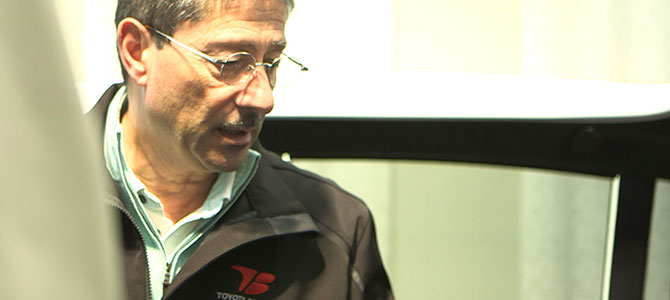
We rely on our knowledge and experience
With the goal of satisfying the customers’ needs, our designs take into account customer viewpoints, actual usage, and environmental conditions. Products which are developed with the customer in mind will always be highly desired in the marketplace.
Quality is reflected in our design by utilizing information from customer satisfaction surveys. We also make use of learnings from previous designs and experiences from functional areas like quality assurance, our manufacturing plants, and suppliers.
By doing so everyone’s experiences are incorporated into the new design which enables our plants to produce a high quality product with zero defects.
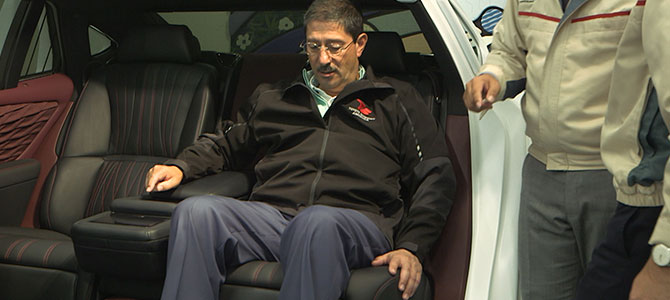
INTERVIEW
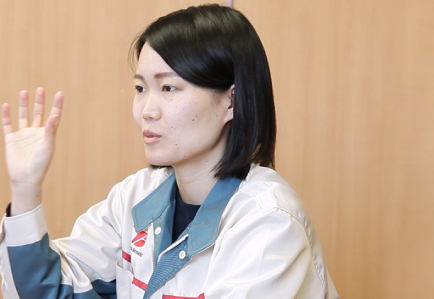


Technical design
Cylinder Head Cover Design
Chihiro Natsume
The required safety and the desired quality
Put simply, the cylinder head cover that I am designing is like the ”lid” of the engine. If it doesn't function, you can expect danger, such as leaking engine oil and impairment in the car's important functions of ”running, turning, and stopping.” We absolutely must not allow any defects.
The feeling that designing products is difficult is rooted in the question of how successfully we can fulfill customer's wishes while still maintaining safety. If we change the shape and size of the engine, it also changes the cylinder head cover's heat resistance and durability, so we have to run tests each time we make a change. And depending on the type of vehicle, aspects such as the required service life also change. I also get stressed about the increasingly higher quality demanded by the customers, things like extending heat resistance to higher temperatures without changing the material, giving the covers additional functions, and so on. But in times like these, the senior employees help me out. I think the presence of so many experienced senior workers leads to better product quality.
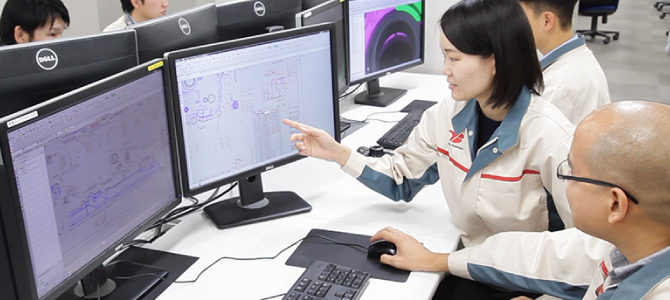
Gain your own understanding of the customers' needs
In order to be put in charge of products for overseas markets, it seemed I needed to see how the product was used locally first. So thinking about it in my own way, I put in for a one-year posting in Thailand. I figured that the only way to understand the conditions under which defects occur and what the end users' needs are would be to see conditions there onsite. Right off the bat, it was a series of surprises. In Japan, you'd never think that the user would open the hood and pour water over the engine, but in Thailand, it's a common sight. It was then I first realized it would be impossible to achieve sufficient quality without including such thinking in our designs.
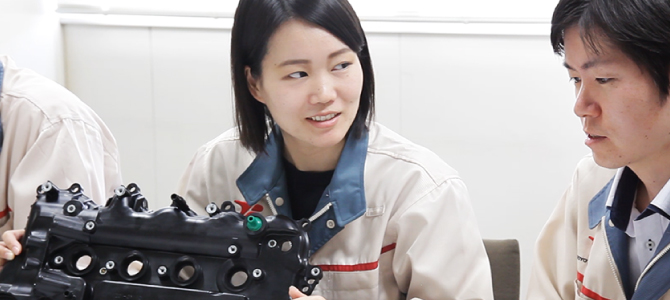
Designs that anticipate the unexpected
It's difficult to incorporate customers' safety and security into a drawing while thinking about the unbelievable things they do to their cars, but we do get the sense there is a challenge to it.
There is no compromise in Toyota Boshoku's designs; you can really understand this by benchmarking. Even though the user can't see this part, we are obsessed about the quality, and they are manufactured with care. I think this results in greater peace of mind for the customer and the person who will attach this to the engine.
I will continue to focus on even the smallest details.
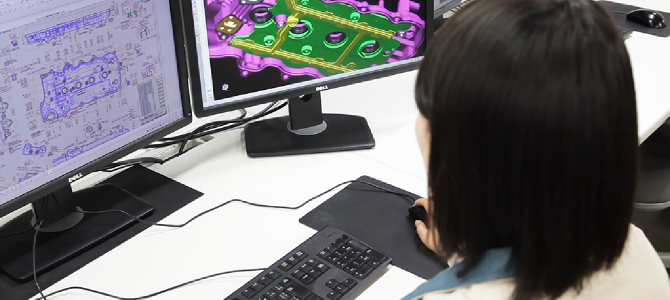
INTERVIEW
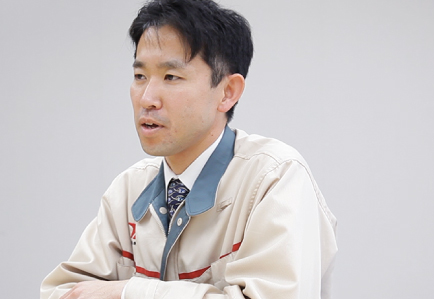


Trial production, Evaluation
Seat Safety&Strength Evaluation
Daisuke Shiga
Judging safety from the user's perspective
Of the many different points checked in evaluating our seats, we are in charge of the ”safety” and ”strength and durability” performance tests. To us, a high-quality product is one that does not end up harming the customer, even when the unexpected happens. We take the user's perspective in making judgments about safety, and when we have trouble deciding something, we think to ourselves, ”What if my family were put in this situation?” Even if the chance of a problem is one in a million, if we have any doubts, we pull the plug before sending the product to the market.
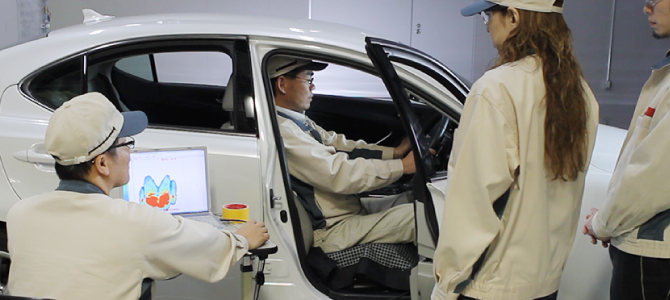
The mission of the Evaluation Division
We conduct durability tests until the item breaks. While passing the durability performance test is certainly the objective, what we focus on is just how the item breaks.
Even in the rare event it does break, we go so far as to make sure that the customer using will not be injured. If we determine it to be dangerous, we start over again from the design stage.
In addition to the standard tests we run for durability, we also have test parameters that include considerations such as the packages for each vehicle being developed, assumptions about the various ways the product will be used based on the customer's sex and physical characteristics, and the various national and regional environments. We run these tests under conditions more severe than what is expected. We call this ”abusive test.” We sometimes have nearly 100 items to cover in the abusive test, any all the environments you could expect to encounter.
To develop a single seat, we conduct tests for ride comfort, collision safety, and other aspects, adding up to hundreds of tests in all. And if it fails to pass even one of those hundreds of tests, that product will not make it to market.
We hold discussions any number of times with other departments, incorporating the findings in the product until it clears.
That is our mission in the testing division.
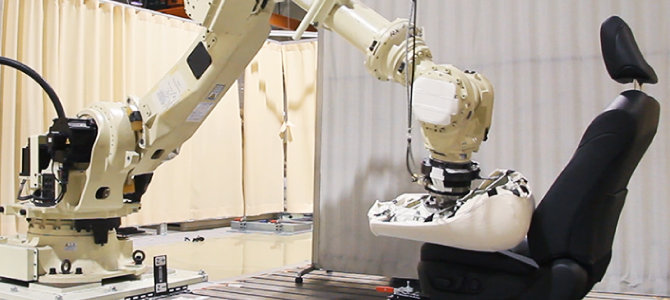
What's required for ”good quality?”
What's always difficult for me is figuring what constitutes ”good quality,” and then setting the targets for that. First there's how the product is used. Customers use products in various different ways, so we have to consider whether a product could harm the customer even if they used it some unexpected way that we would never consider. It's really difficult to determine how deeply we need to think about something before it's ”beyond expected.” Then there is the matter of appropriately meeting the customer's expectations, without going overboard. If cost is no object, we can make a product as good as we want. But if the price is too high, it becomes a burden on the customer. A good product at a low price—that is truly a good quality product, right?
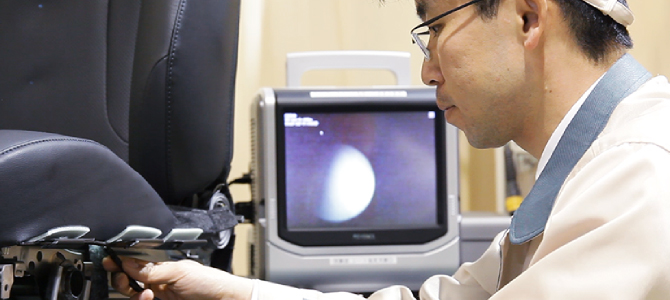
INTERVIEW
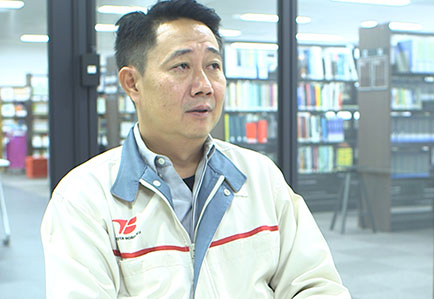


Production preparation
Production preparation
Patanawong Rochanasmita
For products which bring satisfaction to customers
I am manager of the manufacturing division for seats and door trim. I manage the production preparation and manufacturing process for new products, with the ultimate goal of delivering products which satisfy our customers.
When creating a new product, we identify past problems, formulate countermeasures, and review the production processes and production procedures to prevent recurrence of the same problems. Also, we sometimes implement new technology and new equipment. In such cases, I focus on cultivating human resources by holding repeated training until workers have mastered the new technology and can fully use the new equipment without any problems.
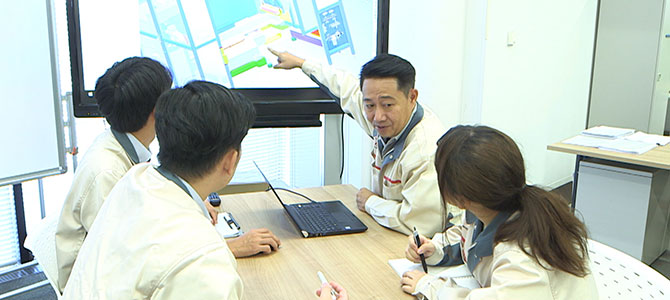
Don’t miss changes
Our customers are not only automobile manufacturers, but also drivers and passengers who sit in, touch, and use our products. We engage in production with the goal of bringing happiness to customers through the use of Toyota Boshoku products. We constantly monitor changes in procedures and workers, ensuring that the workers are proceeding standard operation and products are manufactured in accordance with technical drawings and satisfy conditions for non-defective products. High-quality products are manufactured through the correct and diligent tasks of individual workers. Everyone involved in MONOZUKURI unites to create quality.
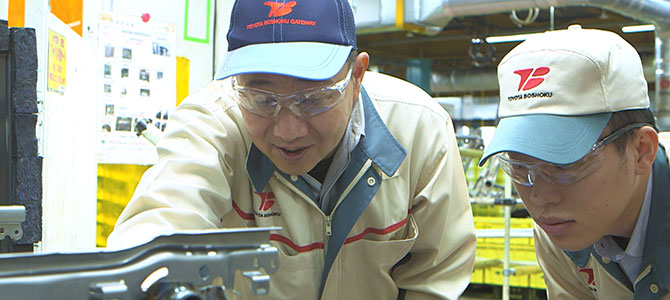
Cultivating human resources for quality
Our mission is to provide our customers with products that are safe, secure, and comfortable. The first thing that's important is to create designs that inhibit defects, and then put together a solid production plan. Furthermore, it's crucial that we be able to respond rapidly and appropriately to irregularities and changes during the production process.
What's especially important in achieving all this is our human relationships. We share roles, skills, and approaches on site, continually improving and working to reach production that our customers can rely on.
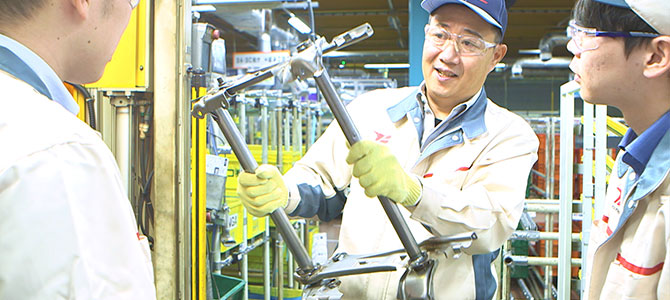
INTERVIEW
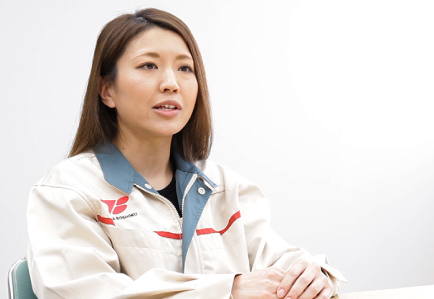


Production
Seat Cover Sewing
Akina Sano
Pride and passion——quality without compromise
I've been in charge of seat cover sewing for 17 years, and as the group leader, I now play a ”relief” role, keeping watch over the entire production line, lending a hand and giving advice to prevent delays and troubles from occurring.
Since stitching is the part of the seat that customers notice most, everyone here works on this with a sense of responsibility and pride. We take pride in producing beautiful seat covers that are tight and firm, with no wrinkles.
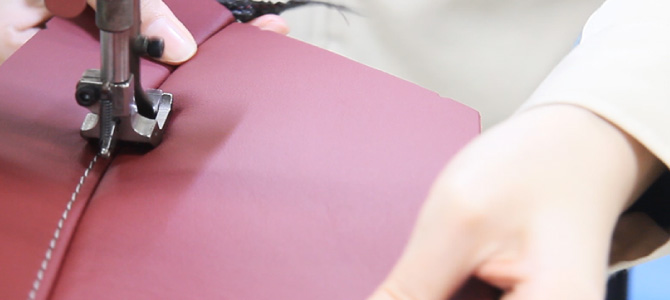
The difficulty of achieving beautiful finish work
When sewing seats with complex three-dimensional shapes, the finish work is done by hand, and there are difficulties that are unique to manual stitching. The biggest problem of all is wrinkles. Points are notched in the fabric, so you can do the finish work without any mistakes if you just sew the pieces together there, but you still need experience to make that finish work beautiful. Getting the seam off by just 1 mm ends up as a major defect, so it takes years before we are allowed to do handle surface stitching. Acquiring these skills takes practice, practice, and more practice. Beginners start out not with fabric, but by practicing sewing paper first, then work at it until we're able to sew high-quality products in the designated time.
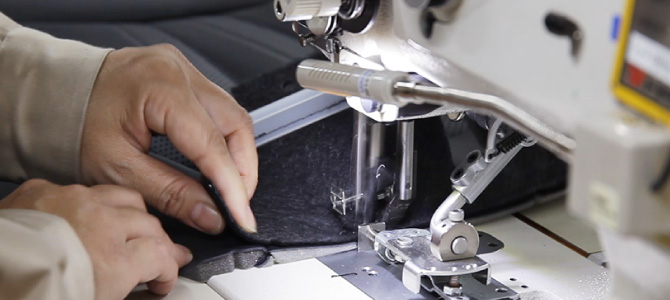
The really important sewing is under the surface
We are taught to do immaculate finish work especially beneath the surface, the parts that the customers can't see. 90% of the sewing work is below the surface, while the surface accounts for only 10%. Poor work there affects the surface when the seat is assembled as a seat, leaving wrinkles and loose fabric.
I think it's critical for enhancing quality that each member of the team understands the importance of this point.
Constantly reviewing the standards and procedures themselves and having each member of the team improve their abilities are critical in enhancing quality. My job is also to carefully examine each individual's strengths and discuss this with my superiors and other group leaders to decide what process each individual should be in charge of.
A single seat cover is the result of teamwork. Quality is not something you create on your own.
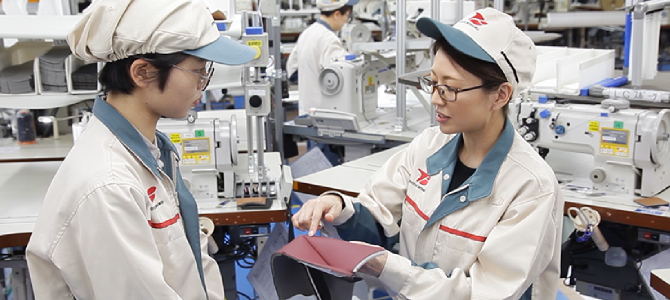
INTERVIEW
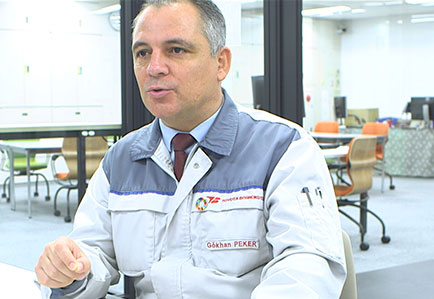


Quality Control
Quality Control
Gokhan Peker
The customer first
Previously, I was engaged in various fields including development, design, manufacturing, and quality. Currently, as general manager, I am in charge of the Quality Control Division and Engineering Control Division.
In order to maintain our status as a trusted supplier, it is important for Toyota Boshoku to review our weaknesses and lessons learned in the past. We must then improve our quality level while continuously implementing Kaizen activities. To achieve these goals, it is essential that we permeate the philosophy of putting customers first throughout all process and include all team members in quality initiatives.
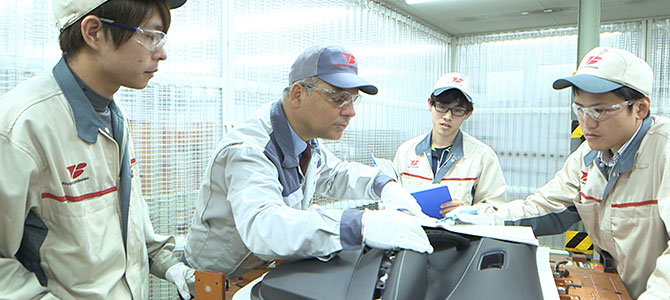
Quality of work process is just as important as quality of products
The word “quality” often brings to mind the quality of products at manufacturing sites. However, the concept of quality also applies to work processes and the results achieved through management of those processes. We can achieve stable quality in products and work processes by standardizing work procedures and management methods, and by permeating the concept of TQM (Total Quality Management) throughout our company. True quality can only be realized through united efforts of all team members.
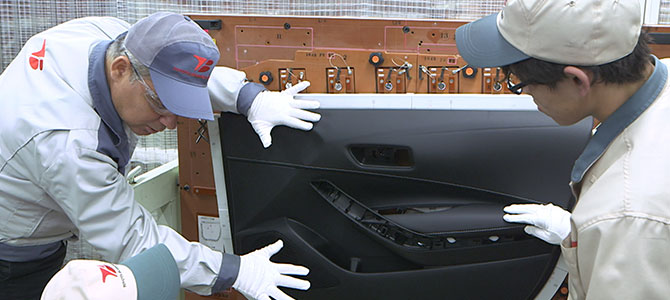
All for our customers
We manufacture automobile components, and so of course our customers include car manufacturers. But we first have to remember that our customers are all the people who are actually buying those cars. We are striving to ensure this mindset is shared by the individual employees working together, as well as throughout the entire company. In addition, my mission is to develop our human resources such that this approach is passed on to the next generation. This will ensure that employees who will be working here in the future have abilities that exceed my own.
We want to devote ourselves to doing our best, based on the concept of putting the customer first.
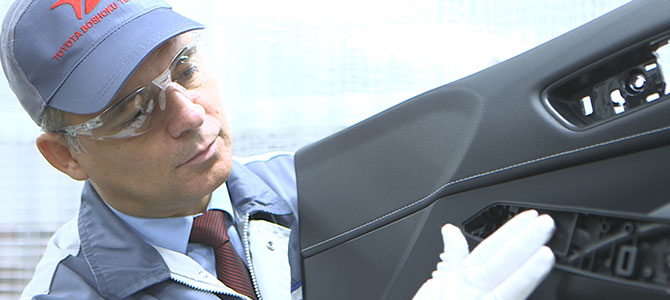
INTERVIEW
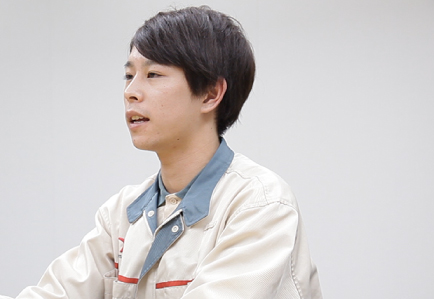


Production
Door Trim Inspection
Hiroya Inagaki
Ourzmotto being ”The customer is the next step.”
I am in charge of inspection of the door trim* surface, that is, the ”designed side” that's visible to the customer. It is my job to check the product at the end of the production line to confirm there are no scratches or other defects.
I've only been at this for about a year and a half, but I don't intend to let anyone else assume responsibility for me in preventing poor quality products from reaching the customers. There is no follow-up process.
Everyone here is doing their best, with our motto being ”The customer is the next step.”
When I had just starting working here, I was surprised at how fast the line moves. For this final quality check, we have less than a minute to inspect the trim on one door. One moment can determine success or failure.
The inspections are fast, but each individual check has to be done carefully. While we may be shipping thousands of products, for the customer, that one car is an expensive purchase.
So we just can't let bad products get shipped. These thoughts are running through my mind in the moment I'm looking at the part.
* Door trim : The panels lining the inner part of the door.
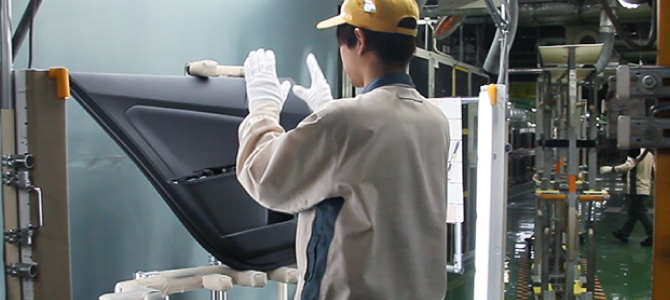
The criteria for pass or fail
At Toyota Boshoku, we focus on the concept that quality is not ensured at the inspection stage, but rather is built in at each step in production, with each employee playing a leading role in quality assurance. So the products arriving at the final inspection stage that I'm responsible for have no defects in the first place. Well, even if there aren't, our job is to keep a close watch based on the premise that there ARE. We need to be uncompromising, so detailed that we get strict about it.
If we're ever unsure about a product, we never hesitate to reject the item. The rule that gets drilled into us from our first day on the job is that when something seems wrong, ”Stop, call, and wait.” Once we stop the line, we call for a superior to come over, and then as a team we match our standards for whether the piece is passed or rejected. That way, the standards don't vary with the inspector.
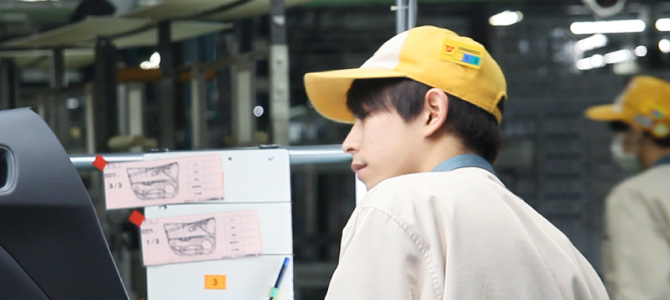
Future goals
Although I can do underside inspections for all models, when it comes to the designed side, I'm still a beginner. It's hard to judge because you have to do it by eye. I want to train more and be put in charge of more models, doing my best to become the relief guy.
